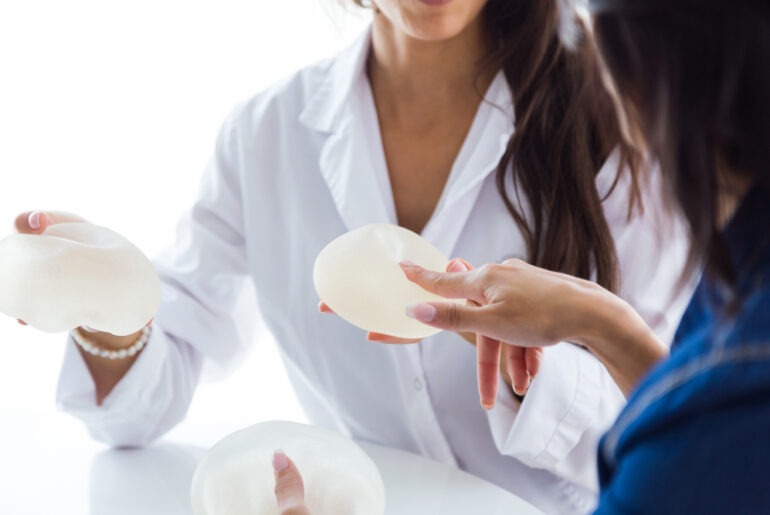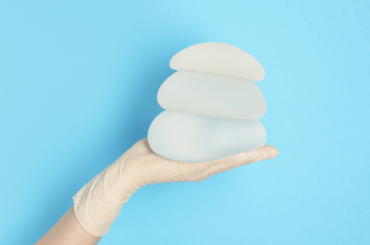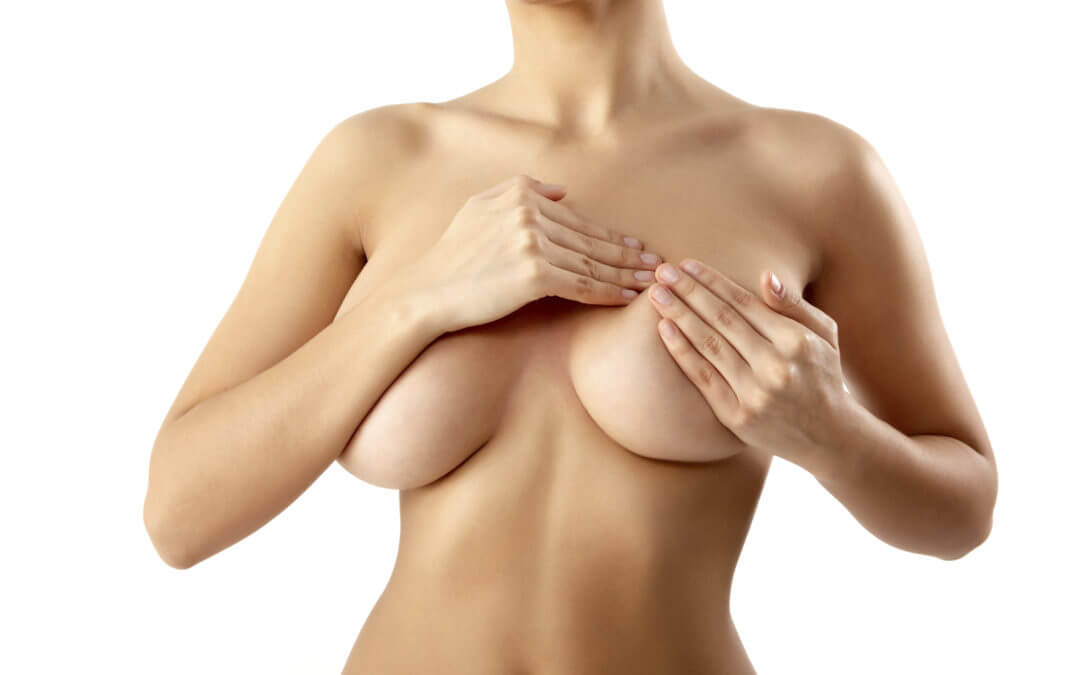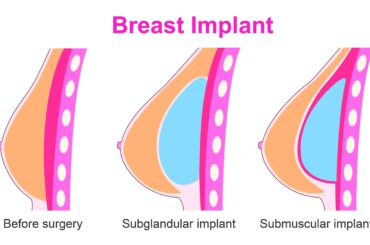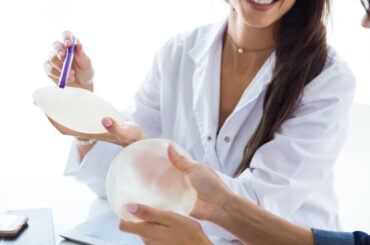When looking into breast augmentation surgery, there are two kinds of breast implants you can choose from: silicone vs saline. Saline breast implants consist of a silicone shell filled with a sterile saline solution, while silicone implants consist of a silicone shell filled with a silicone gel. If you’re considering surgical breast augmentation, be sure to keep in mind the different advantages and disadvantages of each material.
Both types of implant can enlarge the size, form and feel of a woman’s breasts. They can also be used for other applications beyond breast augmentation, including repairing breasts, correcting congenital defects or for chest reconstruction following a mastectomy.
Silicone Breast Implants
![]() Silicone implants are made up of a solid silicone shell filled with a viscous gel which is also made of silicone. Silicone itself is composed of several different compounds but the majority of silicone is mainly silicon mixed with varying amounts of carbon, oxygen, and hydrogen. It can be made into oils, gels, elastomers and even rubbers. Silicone implants can also be shaped into many different forms and can be used for artificial joints and facial implants.
Silicone implants are made up of a solid silicone shell filled with a viscous gel which is also made of silicone. Silicone itself is composed of several different compounds but the majority of silicone is mainly silicon mixed with varying amounts of carbon, oxygen, and hydrogen. It can be made into oils, gels, elastomers and even rubbers. Silicone implants can also be shaped into many different forms and can be used for artificial joints and facial implants.
One of the main complaints about silicone implants is that they can be somewhat obvious. Silicone implants frequently do not offer realistic texture and do not move with your body the way a natural breast would. However, they do not leak or rupture as much as saline implants. Unfortunately, it can be difficult to detect a tear in the silicone, making it necessary to have frequently MRI scans to ensure they stay intact. Another downside to silicone is that it increases the likelihood of capsular contracture. Capsular contracture is a painful condition in which the body, in an attempt to reject foreign material, creates collagen fibers around the implant.
Saline Breast Implants
Technically, saline implants also use silicone to contain the saline solution. The saline within the implants is sterile and is not recognized by the body as a foreign material. Saline implants are more flexible than silicone implants and require a smaller incision for insertion, reducing discomfort and recovery time.
Many women like how natural saline implants look and feel. Unlike silicone, saline provides a somewhat natural look and feel, moving with the body. However, the implant’s movement can cause rippling or wrinkling of the skin. In addition, saline implants are more likely to rupture or leak than silicone ones.
Things to Keep in Mind About Breast Implants
Silicone gel implants are much more expensive than other types of implants.. In 2010, breast enlargement surgery cost an average of $4,960 and that only covered the surgeon’s fee. Saline implants incurred an additional fee of $3,400, while silicone implants cost as much as $4,100. These costs do not include anesthesia and special bra after the surgery. The cost of the surgery does not necessarily correlate with the quality of results; while searching for the lowest price usually does not end well, high prices do not always merit good results. The most important criteria for consideration are the surgeon’s experience and board certifications.
Also keep in mind that both silicone and saline implants have an expiration date. Many women are not aware of this when entering into the breast implant process and are surprised to discover they need their implants replaced after 10 or 15 years. In addition, implants can rupture, requiring emergency surgery to remove or replace them. read more about the risks of breast implants.
So Which is Better: Silicone vs Saline?
The type of breast implant you choose is a personal decision and neither type is superior to the other. However, if some of this information is giving you pause, there are non-surgical options you can pursue. The safest, least expensive options are natural breast enhancement pills and creams. You can achieve almost the same the results for a fraction of the effort and money you’ll put in for a surgical procedure. For more information, take a look at our product review chart which features reviews and rankings of all of today’s top breast enhancement products.

